Kyocera FS-1020D User Manual
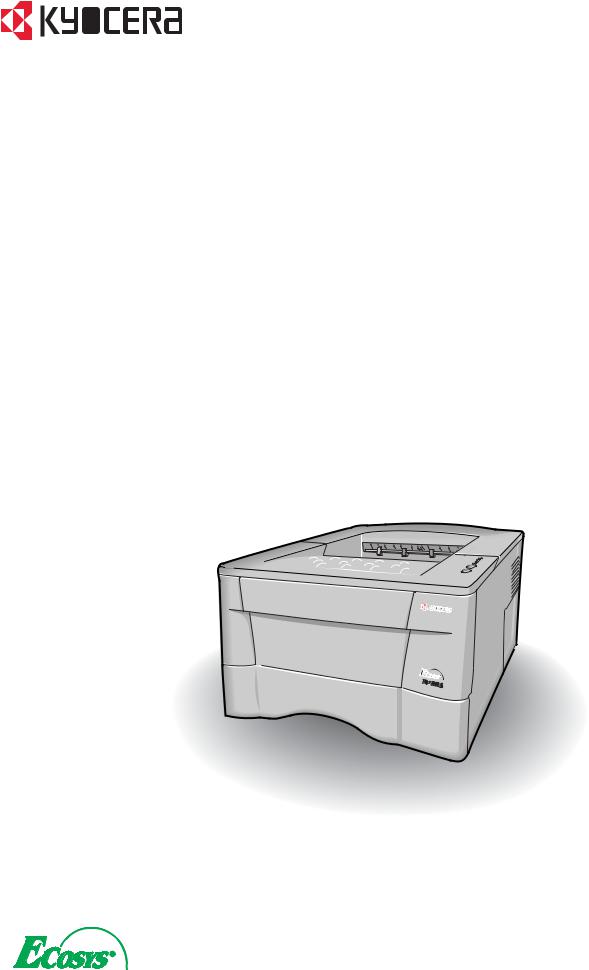
FS-1020D
Page Printer
Operation Guide
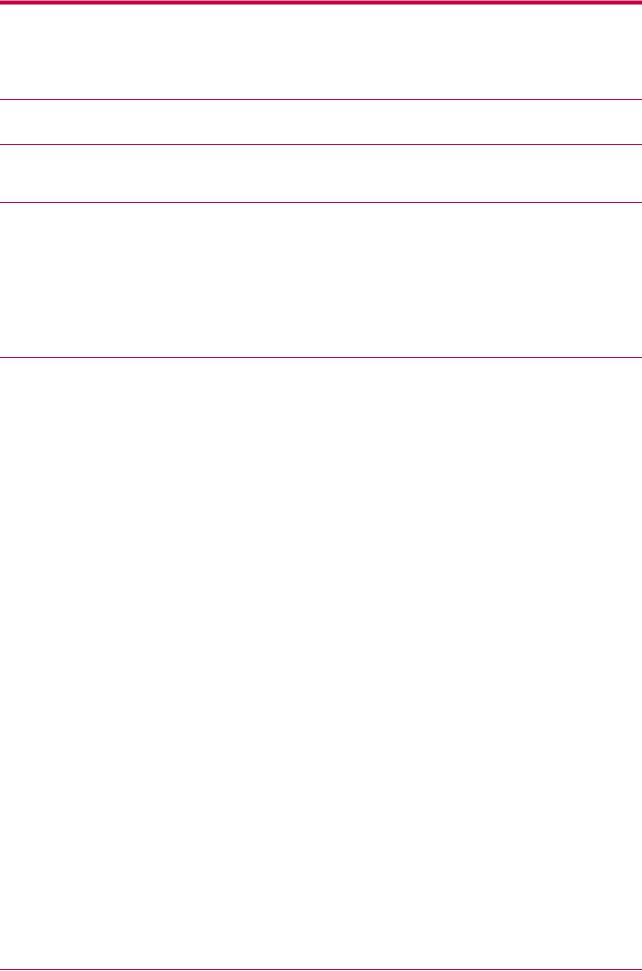
Caution
NO LIABILITY IS ASSUMED FOR ANY DAMAGE CAUSED BY IMPROPER INSTALLATION.
Notice on Software
SOFTWARE USED WITH THIS PRINTER MUST SUPPORT THE PRINTER’S EMULATION MODE. The printer is factory-set to emulate the PCL. The emulation mode can be changed by following the procedures described in Chapter 1 .
Notice
The information in this manual is subject to change without notification. Additional pages may be inserted in future editions. The user is asked to excuse any technical inaccuracies or typographical errors in the present edition.
No responsibility is assumed if accidents occur while the user is following the instructions in this manual. No responsibility is assumed for defects in the printer’s firmware (contents of its read-only memory).
This manual, any copyrightable subject matter sold or provided with or in connection with the sale of the page printer, are protected by copyright. All rights are reserved. Copying or other reproduction of all or part of this manual, any copyrightable subject matter without the prior written consent of Kyocera Mita Corporation is prohibited. Any copies made of all or part of this manual, any copyrightable subject must contain the same copyright notice as the material from which the copying is done.
Regarding Tradenames
PRESCRIBE is a registered trademark of Kyocera Corporation. KPDL and KIR (Kyocera Image Refinement) are trademarks of Kyocera Corporation.
Diablo 630 is a product of Xerox Corporation. IBM Proprinter X24E is a product of International Business Machines Corporation. Epson LQ-850 is a product of Seiko Epson Corporation.
Hewlett-Packard, PCL, and PJL are registered trademarks of Hewlett-Packard Company. Centronics is a trade name of Centronics Data Computer Corp. PostScript is a registered trademark of Adobe Systems Incorporated. Macintosh is a registered trademark of Apple computer, Inc. Microsoft, Windows, and Windows NT are registered trademarks of Microsoft Corporation. PowerPC is a trademark of International Business Machines Corporation. ENERGY STAR is a U.S. registered mark. All other brand and product names are registered trademarks or trademarks of their respective companies.
This Kyocera Mita page printer uses PeerlessPrintXL to provide the HP LaserJet compatible PCL6 language emulation. PeerlessPrintXL is a trademark of The Peerless Group, Redondo Beach, CA 90278, U.S.A.
This product was developed using the Tornado™ Real Time Operating System and Tools from Wind River Systems. 

 This product contains UFST™ and MicroType® from Agfa Corporation.
This product contains UFST™ and MicroType® from Agfa Corporation.
©2003 by KYOCERA MITA CORPORATION All rights reserved. Revision 1.4., November 2003
i
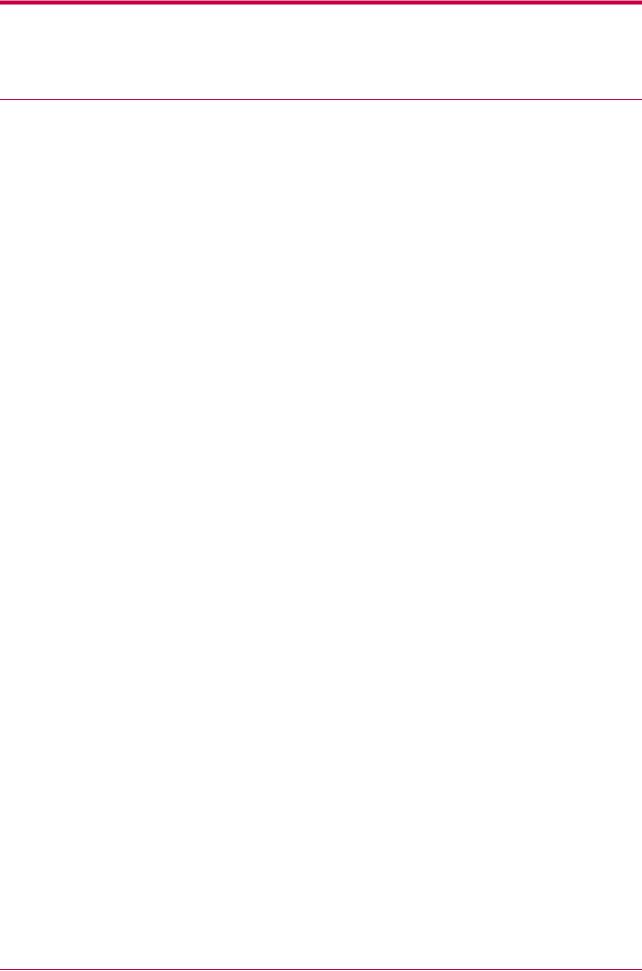
IBM PROGRAM LICENSE AGREEMENT
THE DEVICE YOU HAVE PURCHASED CONTAINS ONE OR MORE SOFTWARE PROGRAMS (“PROGRAMS”) WHICH BELONG TO INTERNATIONAL BUSINESS MACHINES CORPORATION (“IBM”). THIS DOCUMENT DEFINES THE TERMS AND CONDITIONS UNDER WHICH THE SOFTWARE IS BEING LICENSED TO YOU BY IBM. IF YOU DO NOT AGREE WITH THE TERMS AND CONDITIONS OF THIS LICENSE, THEN WITHIN 14 DAYS AFTER YOUR ACQUISITION OF THE DEVICE YOU MAY RETURN THE DEVICE FOR A FULL REFUND. IF YOU DO NOT SO RETURN THE DEVICE WITHIN THE 14 DAYS, THEN YOU WILL BE ASSUMED TO HAVE AGREED TO THESE TERMS AND CONDITIONS.
The Programs are licensed not sold. IBM, or the applicable IBM country organization, grants you a license for the Programs only in the country where you acquired the Programs. You obtain no rights other than those granted you under this license.
The term “Programs” means the original and all whole or partial copies of it, including modified copies or portions merged into other programs. IBM retains title to the Programs. IBM owns, or has licensed from the owner, copyrights in the Programs.
1. License
Under this license, you may use the Programs only with the device on which they are installed and transfer possession of the Programs and the device to another party.
If you transfer the Programs, you must transfer a copy of this license and any other documentation to the other party. Your license is then terminated. The other party agrees to these terms and conditions by its first use of the Program.
You may not:
1)use, copy, modify, merge, or transfer copies of the Program except as provided in this license;
2)reverse assemble or reverse compile the Program; or
3)sublicense, rent, lease, or assign the Program.
2. Limited Warranty
The Programs are provided “AS IS.”
THERE ARE NO OTHER WARRANTIES COVERING THE PROGRAMS (OR CONDITIONS), EXPRESS OR IMPLIED, INCLUDING, BUT NOT LIMITED TO, THE IMPLIED WARRANTIES OF MERCHANTABILITY AND FITNESS FOR A PARTICULAR PURPOSE.
Some jurisdictions do not allow the exclusion of implied warranties, so the above exclusion may not apply to you.
SUPPLEMENT TO AGREEMENT FOR SOFTWARE BUNDLING AND DISTRIBUTION FOR ALDC
3. Limitation of Remedies
IBM’s entire liability under this license is the following;
1) For any claim (including fundamental breach), in any form, related in any way to this license, IBM’s liability will be for actual damages only and will be limited to the greater of:
a)the equivalent of U.S.$25,000 in your local currency; or
b)IBM’s then generally available license fee for the Program
This limitation will not apply to claims for bodily injury or damages to real or tangible personal property for which IBM is legally liable.
IBM will not be liable for any lost profits, lost savings, or any incidental damages or other economic consequential damages, even if IBM, or its authorized supplier, has been advised of the possibility of such damages. IBM will not be liable for any damages claimed by you based on any third party claim. This limitation of remedies also applies to any developer of Programs supplied to IBM. IBM’s and the developer’s limitations of remedies are not cumulative. Such developer is an intended beneficiary of this Section. Some jurisdictions do not allow these limitations or exclusions, so they may not apply to you.
4. General
You may terminate your license at any time. IBM may terminate your license if you fail to comply with the terms and conditions of this license. In either event, you must destroy all your copies of the Program. You are responsible for payment of any taxes, including personal property taxes, resulting from this license. Neither party may bring an action, regardless of form, more than two years after the cause of action arose. If you acquired the Program in the United States, this license is governed by the laws of the State of New York. If you acquired the Program in Canada, this license is governed by the laws of the Province of Ontario. Otherwise, this license is governed by the laws of the country in which you acquired the Program.
ii
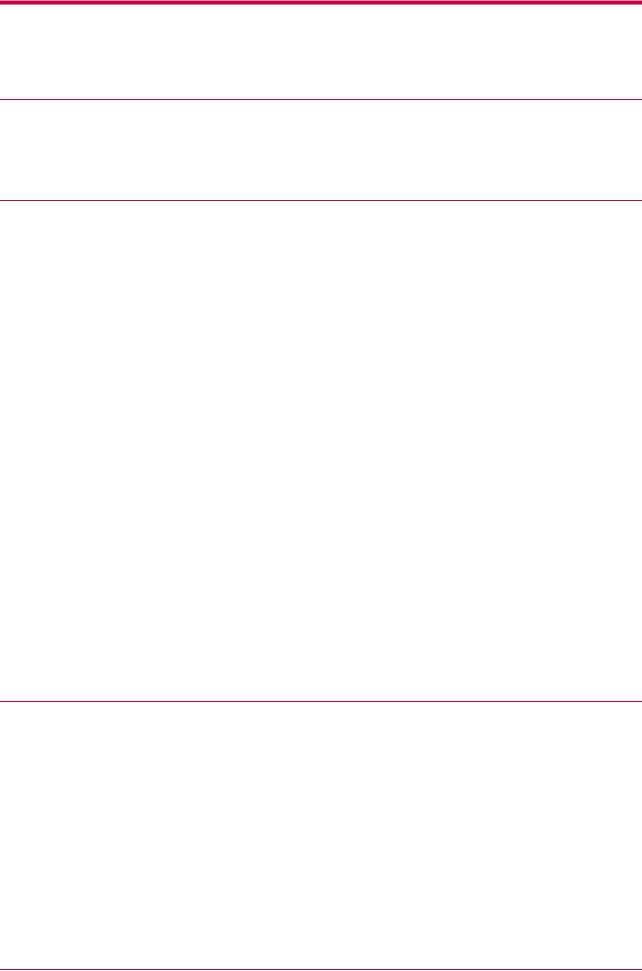
Typeface Trademark Acknowledgement
All resident fonts in this printer are licensed from Agfa Corporation.
Helvetica, Palatino and Times are registered trademarks of Linotype-Hell AG.
ITC Avant Garde Gothic, ITC Bookman, ITC ZapfChancery and ITC Zapf Dingbats are registered trademarks of International Typeface Corporation.
Agfa Japan License Agreement Guidelines
1)“Software” shall mean the digitally encoded, machine readable, scalable outline data as encoded in a special format as well as the UFST Software.
2)You agree to accept a non-exclusive license to use the Software to reproduce and display weights, styles and versions of letters, numerals, characters and symbols (“Typefaces”) solely for your own customary business. Agfa Japan retains all rights, title and interest to the Software and Typefaces and no rights are granted to you other than a License to use the Software on the terms expressly set forth in this Agreement.
3)To protect proprietary rights of Agfa Japan, you agree to maintain the Software and other proprietary information concerning the Typefaces in strict confidence and to establish reasonable procedures regulating access to and use of the Software and Typefaces.
4)You agree not to duplicate or copy the Software or Typefaces, except that you may make one backup copy.
5)This License shall continue until the last use of the Software and Typefaces, unless sooner terminated. This License may be terminated by Agfa Japan if you fail to comply with the terms of this License and such failure is not remedied within thirty (30) days after notice from Agfa Japan. When this License expires or is terminated, you shall either return to Agfa Japan or destroy all copies of the Software and Typefaces and documentation as requested.
6)You agree that you will not modify, alter, disassemble, decrypt, reverse engineer or decompile the Software.
7)Agfa Japan warrants that for ninety (90) days after delivery, the Software will perform in accordance with Agfa Japan-published specifications, Agfa Japan does not warrant that the Software is free from all bugs, errors and omissions.
THE PARTIES AGREE THAT ALL OTHER WARRANTIES, EXPRESSED OR IMPLIED, INCLUDING WARRANTIES OF FITNESS FOR A PARTICULAR PURPOSE AND MERCHANTABILITY, ARE EXCLUDED.
8)Your exclusive remedy and the sole liability of Agfa Japan in connection with the Software and Typefaces is repair or replacement of defective parts, upon their return to Agfa Japan.
IN NO EVENT WILL AGFA JAPAN BE LIABLE FOR LOST PROFITS, LOST DATA, OR ANY OTHER INCIDENTAL OR CONSEQUENTIAL DAMAGES, OR ANY DAMAGES CAUSED BY ABUSE OR MISAPPLICATION OF THE SOFTWARE AND TYPEFACES.
9)New York, U.S.A. law governs this Agreement.
10)You shall not sublicense, sell, lease, or otherwise transfer the Software and/or Typefaces without the prior written consent of Agfa Japan.
11)Use, duplication or disclosure by the Government is subject to restrictions as set forth in the Rights in Technical Data and Computer Software clause at FAR 252-227-7013, subdivision (b)(3)(ii) or subparagraph (c)(1)(ii), as appropriate. Further use, duplication or disclosure is subject to restrictions applicable to restricted rights software as set forth in FAR 52.227-19 (c)(2).
12)YOU ACKNOWLEDGE THAT YOU HAVE READ THIS AGREEMENT, UNDERSTAND IT, AND AGREE TO BE BOUND BY ITS TERMS AND CONDITIONS. NEITHER PARTY SHALL BE BOUND BY ANY STATEMENT OR REPRESENTATION NOT CONTAINED IN THIS AGREEMENT. NO CHANGE IN THIS AGREEMENT IS EFFECTIVE UNLESS WRITTEN AND SIGNED BY PROPERLY AUTHORIZED REPRESENTATIVES OF EACH PARTY.
Cautions for Toner Handling
•Do not incinerate the toner and toner containers. Dangerous sparks may cause burn.
•Never open the toner container or waste toner box.
•Make sure not to inhale the toner, and not to rub your eyes or touch your mouth with the hands stained with the toner. And make sure not to stick to your skin.
•For the disposal of old toner container and waste toner box, consult your dealer. Or dispose of the toner or toner containers in accordance with Federal, State and Local rules and regulations.
•Keep away the toner container from children.
iii

Contents
Introduction ................................................................................................ |
vii |
||
Guide to the Manuals................................................................................................................................... |
viii |
||
Guide to the Operation Guide........................................................................................................................ |
ix |
||
Chapter 1 |
Basic Operations .................................................................... |
1-1 |
|
1.1 |
Operator Panel....................................................................................................................................... |
1-2 |
|
|
1.1.1 Indicators...................................................................................................................................... |
1-3 |
|
|
1.1.2 Keys |
............................................................................................................................................... |
1-3 |
Chapter 2 ........................................................................... |
Maintenance |
2-1 |
|
2.1 |
Toner Container ..............................................................................................................Replacement |
2-2 |
|
|
2.1.1 Toner ......................................................................................Container Replacement Interval |
2-2 |
|
|
2.1.2 Replenishing ......................................................................................................................Toner |
2-3 |
|
2.2 |
Cleaning the ..............................................................................................................................Printer |
2-6 |
|
|
2.2.1 Printer .............................................................................................................................Interior |
2-6 |
|
Chapter 3 ...................................................................... |
Troubleshooting |
3-1 |
|
3.1 |
General Guide ......................................................................................................for Troubleshooting |
3-2 |
|
3.2 |
Print Quality .........................................................................................................................Problems |
3-3 |
|
3.3 |
Indicators ............................................................................................................................................... |
|
3-6 |
|
3.3.1 Maintenance ................................................................................................................Messages |
3-7 |
|
|
3.3.2 Errors ...........................................................................Requiring Service Personnel Attention |
3-9 |
|
|
3.3.3 Error ...........................................................................................................................Messages |
3-12 |
|
|
3.3.4 Normal ..........................................................................................................Indicator Display |
3-14 |
|
3.4 |
Paper Jam .............................................................................................................................Removal |
3-15 |
|
|
3.4.1 Jam ......................................................................at the Face-down Tray and the Rear Cover |
3-15 |
|
|
3.4.2 Jam .........................................................................................................at the Paper Cassette |
3-16 |
|
|
3.4.3 Jam ..................................................................................................................at the Duplexer |
3-16 |
|
|
3.4.4 Jam ...............................................................................................................Inside the Printer |
3-18 |
|
|
3.4.5 Jam ...................................................................................................................at the MP Tray |
3-19 |
|
iv

Contents
Chapter 4 Paper Selection....................................................................... |
4-1 |
|
4.1 |
General Guidelines ................................................................................................................................ |
4-2 |
|
4.1.1 Paper Availability......................................................................................................................... |
4-2 |
|
4.1.2 Paper Specifications ..................................................................................................................... |
4-2 |
4.2 |
Selecting the Right Paper...................................................................................................................... |
4-3 |
4.3 |
Special Paper.......................................................................................................................................... |
4-7 |
|
4.3.1 Transparency (overhead projection film).................................................................................... |
4-7 |
|
4.3.2 Adhesive-Backed Labels .............................................................................................................. |
4-8 |
4.4 |
Paper Type ........................................................................................................................................... |
4-11 |
Chapter 5 Fonts ....................................................................................... |
5-1 |
|
5.1 |
Internal Fonts ........................................................................................................................................ |
5-2 |
5.2 |
List of Fonts ........................................................................................................................................... |
5-3 |
|
5.2.1 Internal Scalable and Bitmap Fonts and KPDL Fonts .............................................................. |
5-3 |
Appendix A Options.................................................................................... |
A-1 |
|
A.1 |
Available Options .................................................................................................................................. |
A-2 |
A.2 |
Expansion Memory Installation........................................................................................................... |
A-3 |
A.3 |
Memory (CompactFlash) Card ............................................................................................................. |
A-8 |
A.4 |
Network Interface Card...................................................................................................................... |
A-10 |
Appendix B Host Computer Interface........................................................ |
B-1 |
||
B.1 |
Parallel Interface.................................................................................................................................. |
B-2 |
|
|
B.1.1 Parallel Interface Communication Modes................................................................................. |
B-2 |
|
|
B.1.2 |
Interface Signals......................................................................................................................... |
B-2 |
B.2 |
USB Interface....................................................................................................................................... |
B-6 |
|
|
B.2.1 Specifications .............................................................................................................................. |
B-6 |
|
|
B.2.2 Interface Signals......................................................................................................................... |
B-6 |
|
B.3 |
Serial Interface (Option)...................................................................................................................... |
B-7 |
|
|
B.3.1 RS-232C Interface ...................................................................................................................... |
B-7 |
|
B.4 |
RS-232C Protocol.................................................................................................................................. |
B-9 |
|
|
B.4.1 PRESCRIBE FRPO D0 Command .......................................................................................... |
B-10 |
|
B.5 |
RS-232C Cable Connection................................................................................................................ |
B-11 |
|
|
B.5.1 Obtain a Suitable RS-232C Cable ........................................................................................... |
B-11 |
|
|
B.5.2 Connecting the Printer to the Computer ................................................................................ |
B-11 |
|
v

Contents
Appendix C Printer Specifications |
............................................................. C-1 |
C.1 Printer Specifications........................................................................................................................... |
C-2 |
Glossary........................................................................................ |
Glossary-1 |
Index .................................................................................................. |
Index-1 |
vi
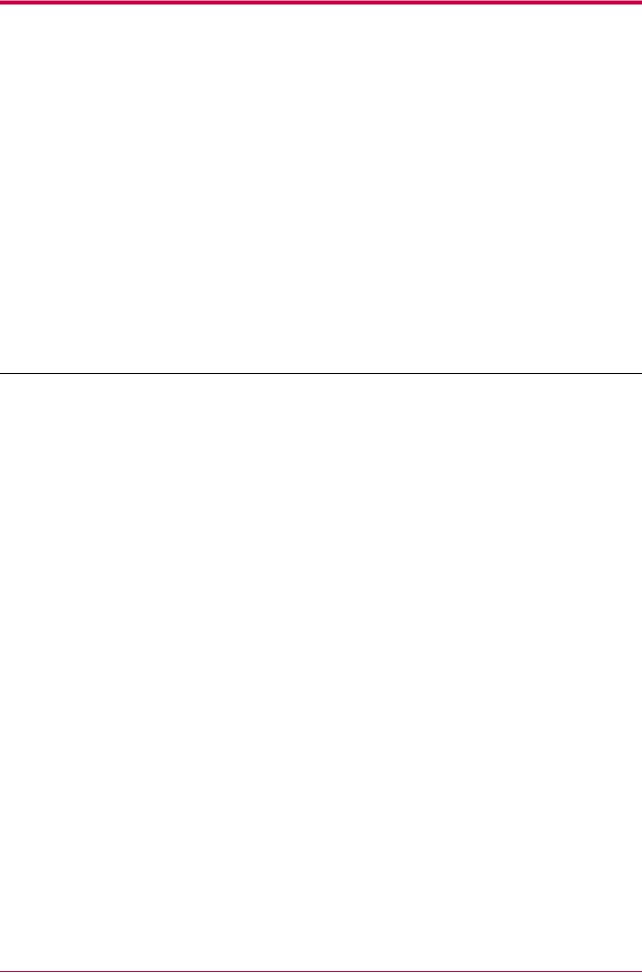
Introduction
The Kyocera Mita page printer has many desirable features, such as the duplex printing mode which lets you print onto both sides of the paper and an Auto Media Type Selection function that automatically selects the media before printing.
This section explains the following topics:
•Guide to the Manuals •Guide to the Operation Guide
vii
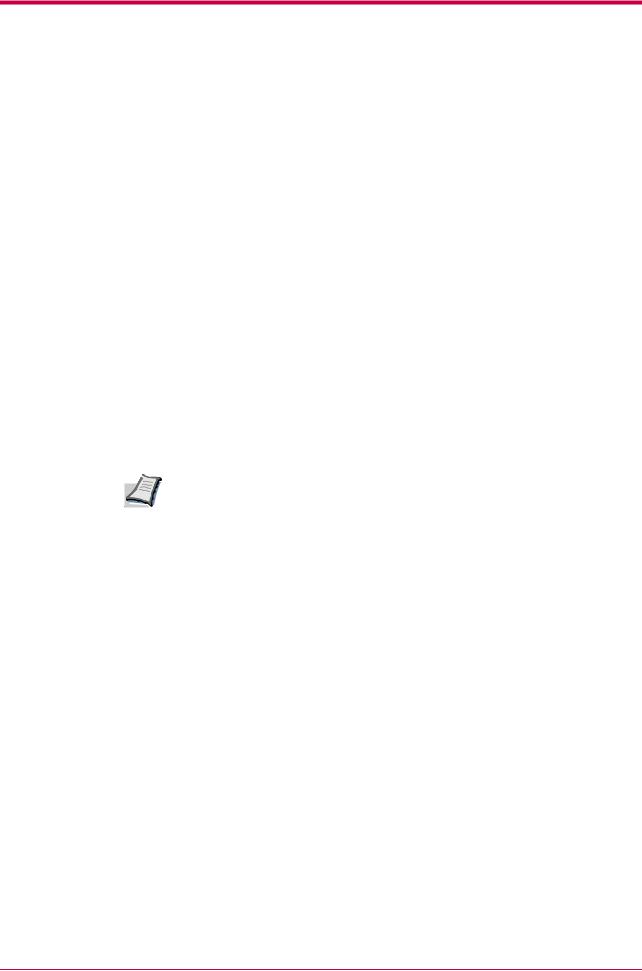
Guide to the Manuals
Item |
Description |
Installation Guide |
Describes procedures from printer setup to printing a |
(paper manual) |
test page. |
|
|
KX Printer Driver |
Describes the procedure to install the printer |
Installation Guide |
driver software. |
(paper manual) |
|
|
|
Operation Guide |
Guides you through topics concerning the operations |
(this manual) |
and maintenance of the printer. |
|
|
KX Printer Drivers |
Describes how to install and set the printer driver. |
Operation Guide |
|
|
|
PRESCRIBE Command |
PRESCRIBE is the native language of the Kyocera |
Technical Reference |
Mita printers. This Technical Reference contains the |
|
information about how the printing is performed using |
|
the PRESCRIBE commands as well as the font and |
|
emulation description. Also included is a list of |
|
permanent parameters and their explanation needed |
|
when customizing your printer. |
|
|
PRESCRIBE Command |
Gives a detailed explanation of the PRESCRIBE |
Reference |
command syntax and parameters with the aid of print |
|
examples. |
|
|
•For information on how to install the printer driver software, refer to the KX Printer Driver Installation Guide that is included with the printer.
• For information on how to use the printer driver software, refer to the KX Printer Driver Operation Guide that is included on the Kyocera Mita Document Library CD-ROM.
viii

Guide to the Operation Guide
This Operation Guide guides you through the following topics:
Chapter 1 Basic Operations
This chapter describes the names and functions of the keys and indicators on top of the printer.
Chapter 2 Maintenance
This chapter explains how to replace the toner container and how to care for your printer.
Chapter 3 Troubleshooting
This chapter explains how to handle printer problems that may occur, such as paper jams.
Chapter 4 Paper Selection
This chapter explains the types of paper that can be used with the printer.
Chapter 5 Fonts
This chapter explains about and lists the printer’s internal fonts.
Appendix A Options
This appendix explains available options, how to expand the printer’s memory, and also how to install the memory card and the network interface card.
Appendix B Host Computer Interface
This appendix describes the pin assignment and specifications for the printer’s parallel interface, USB interface, and optional serial interface.
Appendix C Printer Specifications
This appendix lists the printer’s specifications.
Glossary
This glossary explains the terminology used in this guide.
ix
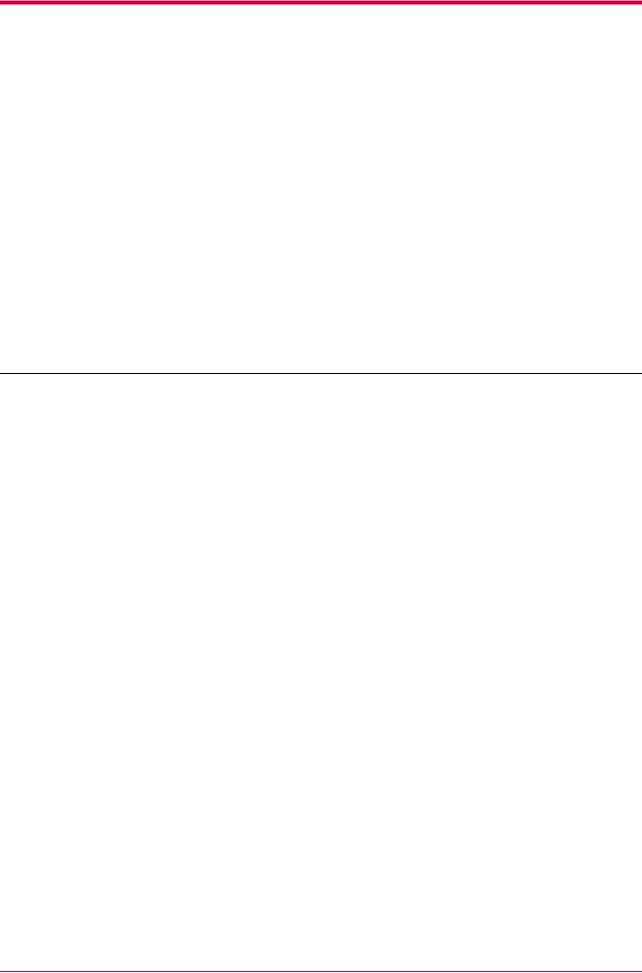
Chapter 1 Basic Operations
This chapter explains the following topic:
• Operator Panel
1-1
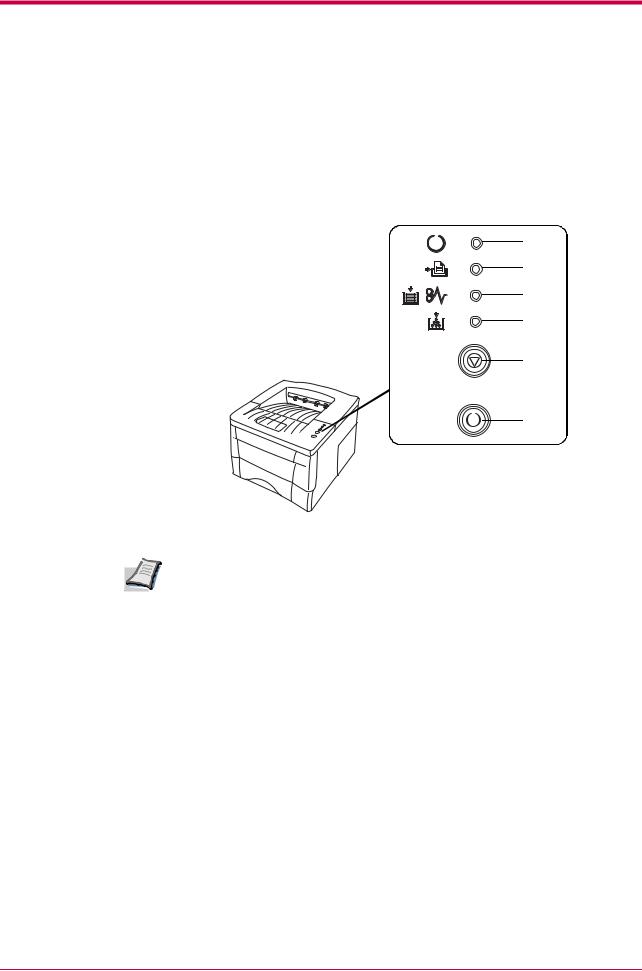
Operator Panel
1.1Operator Panel
The operator panel on top of the printer consists of four indicators and two keys. The four indicators light, flash, and go off in combination, indicating the printer’s status. The keys perform operations, such as canceling data, switching the printer mode between online and offline status, and printing status pages.
1
2
3
4
5
6
Figure 1-1
The numbers used in the above figure are referred to in the Reference column of the table on the following page.
1-2

Operator Panel
1.1.1Indicators
Refer to the following table for the name and description of each indicator. The same indicator can have a variety of meanings, depending on the speed at which it is flashing. For details, see Chapter 3.
Reference |
Name |
Status |
Meaning |
||
1 |
Ready indicator |
Lit |
Indicates online status (printing is possible). |
||
|
|
|
|
|
|
|
|
|
|
Flashing |
• An error has occurred, but printing resumes when the |
|
|
|
|
|
key is pressed. |
|
|
|
|
|
• Offline status. You cannot print, but the printer can receive |
|
|
(Green) |
|
data. |
|
|
|
|
|
|
• The printer is in sleep mode. |
|
|
|
|
|
|
|
|
|
|
Off |
Printing has stopped because an error has occurred. |
|
|
|
|
|
|
2 |
Data indicator |
Lit |
The printer is processing data. |
||
|
|
|
|
|
|
|
|
|
|
Flashing |
The printer is receiving data. |
|
|
(Green) |
|
|
|
|
|
|
|
|
|
3 |
|
Attention |
Lit |
The printer cover is open. |
|
|
|
indicator |
|
|
|
|
Flashing |
• A paper jam has occurred. |
|||
|
|
|
|
||
|
|
|
|
|
• The paper cassette is not inserted properly or the paper has |
|
|
|
(Red) |
|
run out. |
|
|
|
|
||
|
|
|
|
||
|
|
|
|
|
|
|
|
|
Off |
The printer status is normal. |
|
|
|
|
|
|
|
4 |
Toner indicator |
Lit |
The printer has stopped because the toner is exhausted. |
||
|
|
|
|
|
|
|
|
|
|
Flashing |
The toner is running low. |
|
|
|
(Red) |
|
|
|
|
|
|
|
|
Table 1-1 |
|
|
|
|
|
1.1.2Keys
|
|
Refer to the following table for the name and description of the basic |
|
|
functions of each key. |
|
|
|
Reference |
Name |
Function |
5 |
key |
Cancels printing in progress when pressed for 1 second or more. |
|
(Cancel key) |
|
|
|
|
6 |
key |
• Switches between online and offline when pressed for less than 3 seconds. |
|
|
• Depending on the error message displayed in the KM-NET for Clients, there |
|
(Go key) |
are cases where operation will continue after pressing this key. If such a |
|
message appears, operation resumes when this key is pressed. |
|
|
|
|
|
|
(The KM-NET for Clients utility is used for making printer setting from a |
|
|
computer and is contained on the Kyocera Mita Software Library CD-ROM |
|
|
that is supplied with the printer. For details, see the KM-NET for Clients |
|
|
Operation Guide.) |
•Prints a standard status page† when pressed for 3 seconds or more and less than 10 seconds.
•Prints a service status page†† when pressed for 10 seconds or more.
Table 1-2
† For a full description of the standard status page, see the next page.
††The service status page is used for service purposes.
1-3
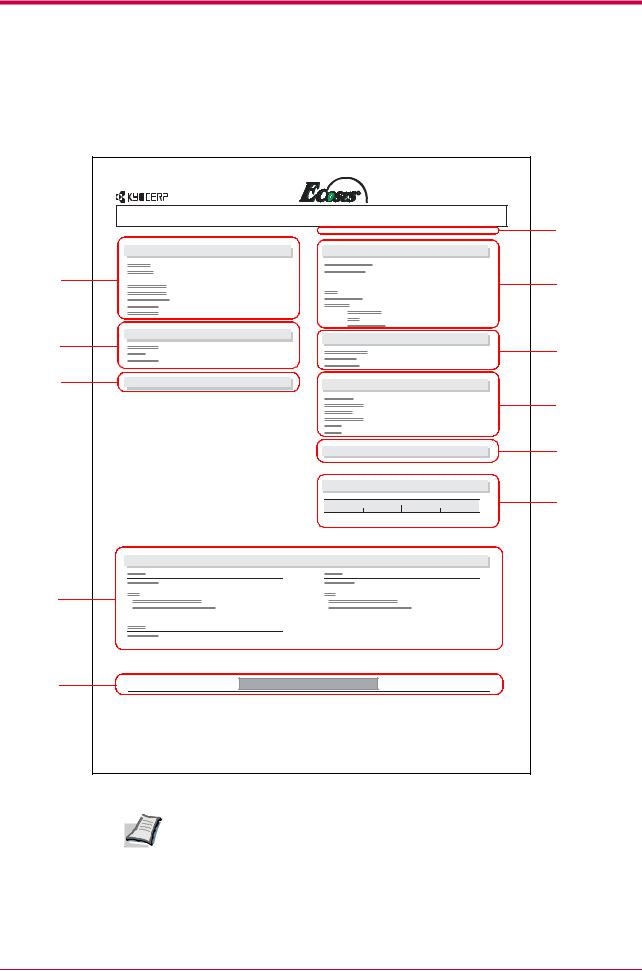
Operator Panel
Understanding the Status Page
The following is the printout of a typical standard status page. Its contents are explained in detail on the next page.
|
|
FS-1020D Page Printer |
|
|
STATUS PAGE |
|
1 |
|
Firmware Version: |
Released: |
|
|
|
|
|
Hardware Information |
Memory |
|
|
2 |
|
|
5 |
3 |
Page Information |
Installed Options |
|
6 |
|
|
|
|
4 |
Network Status |
Emulation |
|
|
7 |
|
Error Log |
8 |
|
Toner Gauge |
9 |
|
|
|
|
0 |
100 |
|
Interfaces |
|
10 |
|
|
11 |
KIR Test pattern |
Mode ON |
Figure 1-2 |
|
|
Items and values on the status page may vary depending on the printer’s firmware version.
1-4

Operator Panel
1 — Software Version
This information shows the software (firmware) version and date of issue of the printer.
2 — Hardware Information
This information shows the currently selected paper source (indicated by an asterisk), paper size, and various other printer settings.
3 — Page Information
This information shows the currently selected resolution, number of copies printed to date, and the total page count.
4 — Network Status
This shows the IP address, subnet mask address, default gateway address and other settings for the network interface card installed in the printer.
5 — Memory
This information shows the amount of total memory installed in the printer, the amount of currently available memory, and the current status of the RAM disk.
6 — Installation Options
This shows the option(s) currently installed in the printer.
7 — Emulation
This shows all available emulations and the currently selected emulation (marked with an asterisk). The printer is shipped from the factory with PCL 6 emulation selected.
8 — Error Log
This shows the last three instances of the following six types of errors, listed in order of occurrence: KPDL Error Press GO; Memory overflow
Press GO; Print overrun Press GO; File not found Press GO; MemoryCard err Press GO; RAM disk error Press GO. (These are displayed on the computer screen when using KM-NET for Clients.)
The most recent error is displayed on the top line of the Error Log. For error remedies, see Chapter 3. Error information is cleared when the printer’s power is turned off.
9 — Toner Gauge
This shows the approximate level of remaining toner. When the value is 100, the toner container is full. The closer to 0, the smaller the amount of remaining toner.
1-5

Operator Panel
10 — Interface Information
This information shows all interfaces installed in the printer and the currently selected interface (marked with an asterisk).
The Font section shows the font that is automatically selected when the printer starts up (default font). It is possible to set different default fonts for each interface.
11 — KIR Test Pattern
This shows the KIR test pattern. You can confirm whether KIR is on or off.
1-6
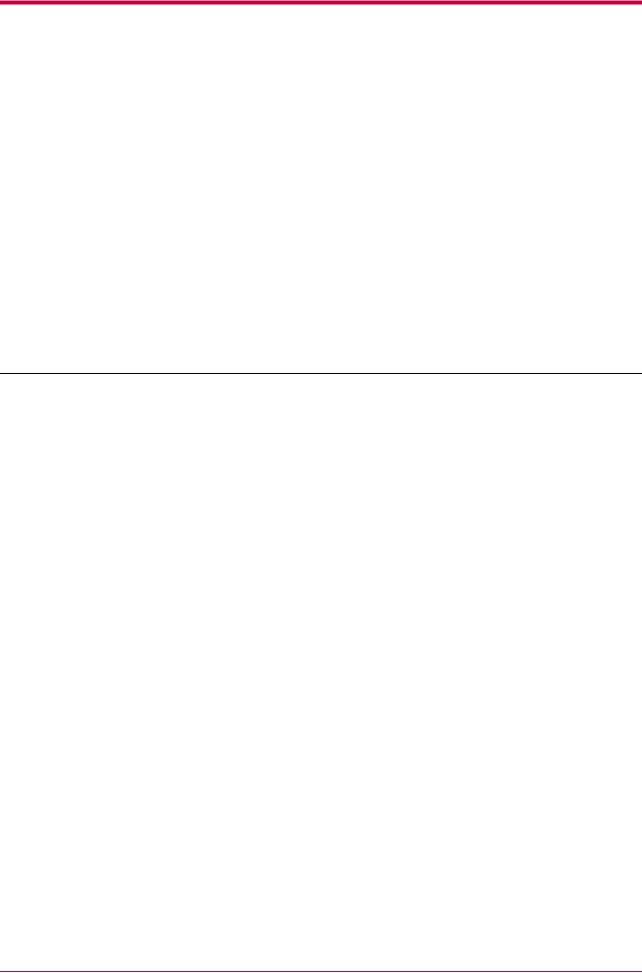
Chapter 2 Maintenance
This chapter explains how to replace the toner container and how to clean parts such as the registration roller and charger wire.
This chapter explains the following topics:
•Toner Container Replacement
•Cleaning the Printer
2-1
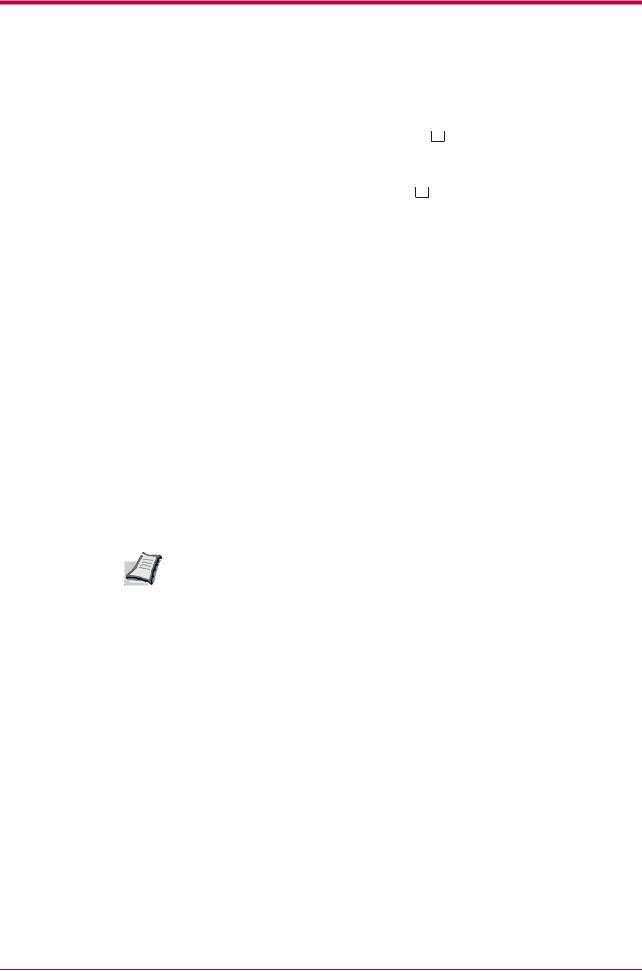
Toner Container Replacement
2.1Toner Container Replacement
When the printer runs low on toner, the 
 (toner) indicator flashes on the operator panel. Be sure to promptly replace the toner container and clean the inside of the printer when this message appears.
(toner) indicator flashes on the operator panel. Be sure to promptly replace the toner container and clean the inside of the printer when this message appears.
If the printer stops printing while the 
 (toner) indicator is lit, replace the toner container to continue printing.
(toner) indicator is lit, replace the toner container to continue printing.
2.1.1Toner Container Replacement Interval
Assuming an average toner coverage of 5%, with EcoPrint mode turned off the toner container will need replacing approximately once every 7,200* printed pages.
*In the case of a new printer in which a toner kit has been installed for the first time, the number of copies that can be printed will be approximately 3,600.
Toner Kit to be Used
Name: TK-18 Description: Toner container
Wiper cloth Plastic bag Installation Guide
(The kit supplied with the printer only contains the toner container and wiper cloth.)
•Be sure to distance items such as floppy disks during toner container
replacement.
• Be sure to clean the inside of the printer when replacing the toner container. For details, see section 2.2 Cleaning the Printer on page 2- 6.
•Use of original Kyocera Mita toner kits is highly recommended to prevent printer trouble and ensure the long life of the printer.
2-2
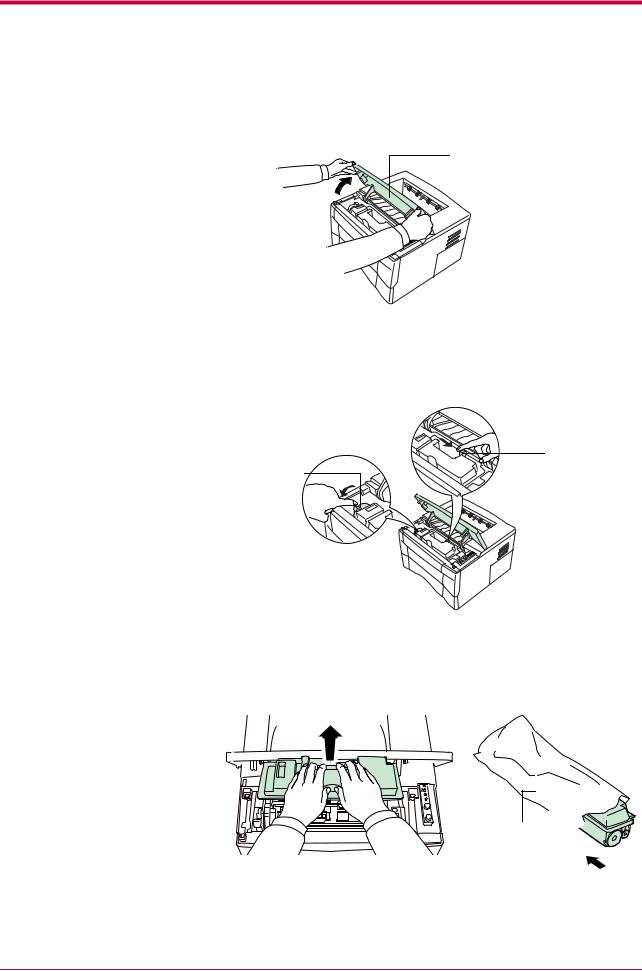
Toner Container Replacement
2.1.2Replenishing Toner
1 Open the printer’s top cover.
Top Cover
|
Figure 2-1 |
2 |
Pull lock lever #1 to the release (UNLOCK) position, then pull lock |
lever #2 to the release (right) position. |
Lock Lever #2
Lock Lever #1
|
Figure 2-2 |
3 |
Gently remove the old toner container. Put it in the supplied plastic |
bag and dispose of it. |
Plastic Bag
Figure 2-3
2-3
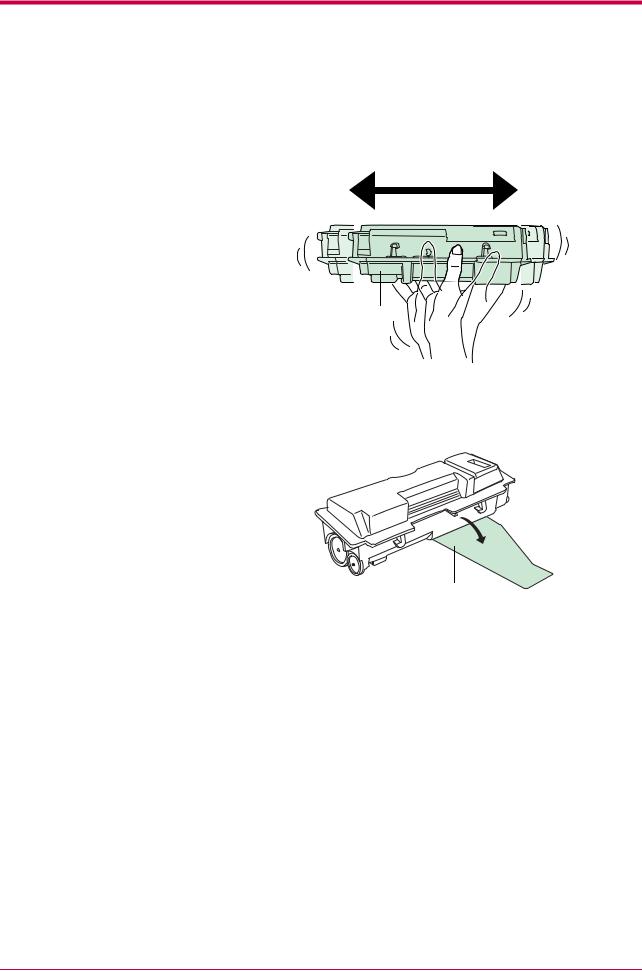
Toner Container Replacement
4 |
Take the new toner container from the bag. Hold it with the |
protective seal (orange-colored) facing up. Shake the toner container |
horizontally at least 5 times. This ensures that the toner is evenly distributed inside.
New Toner Container
Figure 2-4
5 Carefully remove the protective seal (orange-colored).
Protective Seal
Figure 2-5
2-4
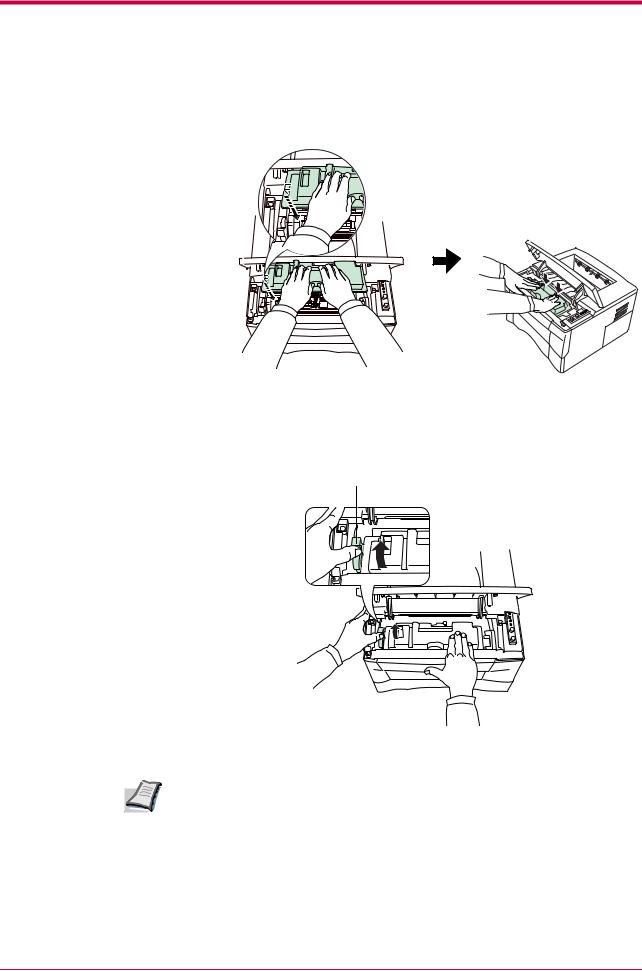
Toner Container Replacement
6 |
Install the new toner container in the printer. Push firmly on the top |
of the container at the positions marked PUSH HERE until you hear |
it click in place.
|
Figure 2-6 |
7 |
While pushing down on the toner container, push lock lever #1 to the |
lock (LOCK) position. (Lock lever #2 is automatically locked.) |
Lock Lever #1
Figure 2-7
•If the toner low indication flashes or remains lit after installing the new toner container, take the toner container out once, shake it well,
then install again.
•After you have replaced the toner container, be sure to reset the internal toner counter. To reset the toner counter, next time you turn
on the power to the printer, keep pushing the  key until the Ready indicator lights up.
key until the Ready indicator lights up.
2-5
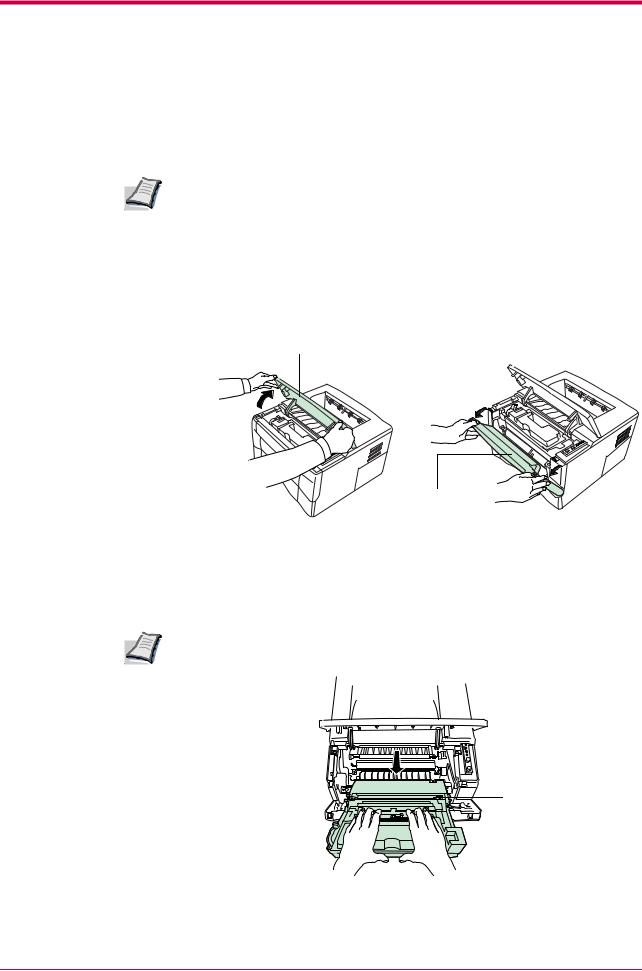
Cleaning the Printer
2.2Cleaning the Printer
To avoid print quality problems, the interior of the printer must be cleaned with every toner container replacement.
Cleaning should be done from time to time to avoid print quality problems.
2.2.1Printer Interior
To avoid print quality problems due to paper dust and debris, clean the interior of the printer in the following manner.
1 Open the printer’s top and front covers.
Top Cover
|
Front Cover |
|
Figure 2-8 |
2 |
Lift the process unit together with the toner container out of the |
printer. |
The drum in the process unit is sensitive to light. Never expose the drum even to normal office lighting (500 lux) for more than five minutes.
Process Unit
Figure 2-9
2-6
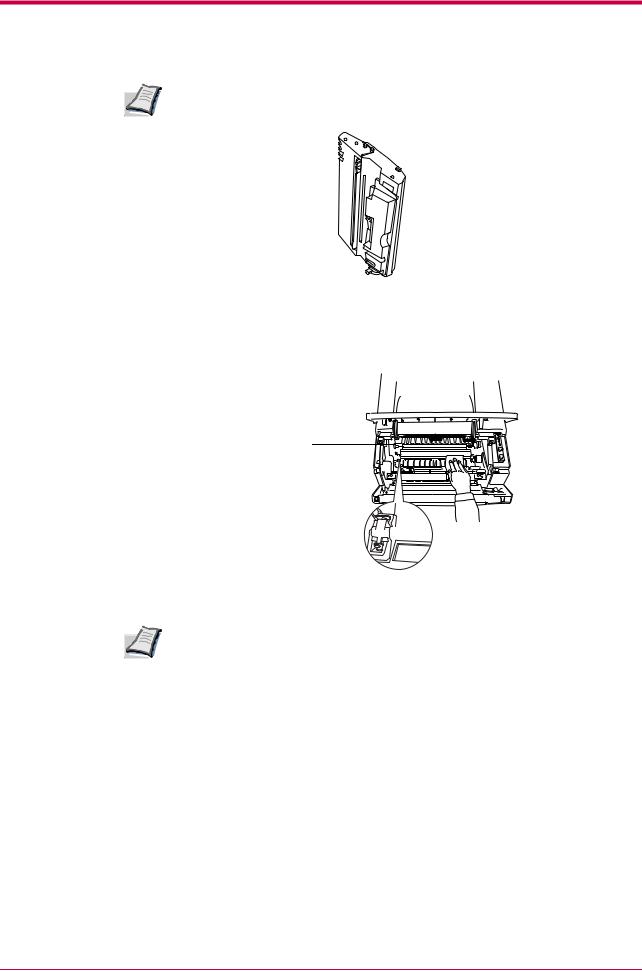
Cleaning the Printer
Never stand the process unit on end.
NO
Figure 2-10
3 |
Use the supplied wiper cloth to clean dust and dirt away from the |
registration roller (metal). |
Transfer Roller
 Registration Roller
Registration Roller
Figure 2-11
While cleaning, be careful to avoid touching the transfer roller (the black roller).
2-7
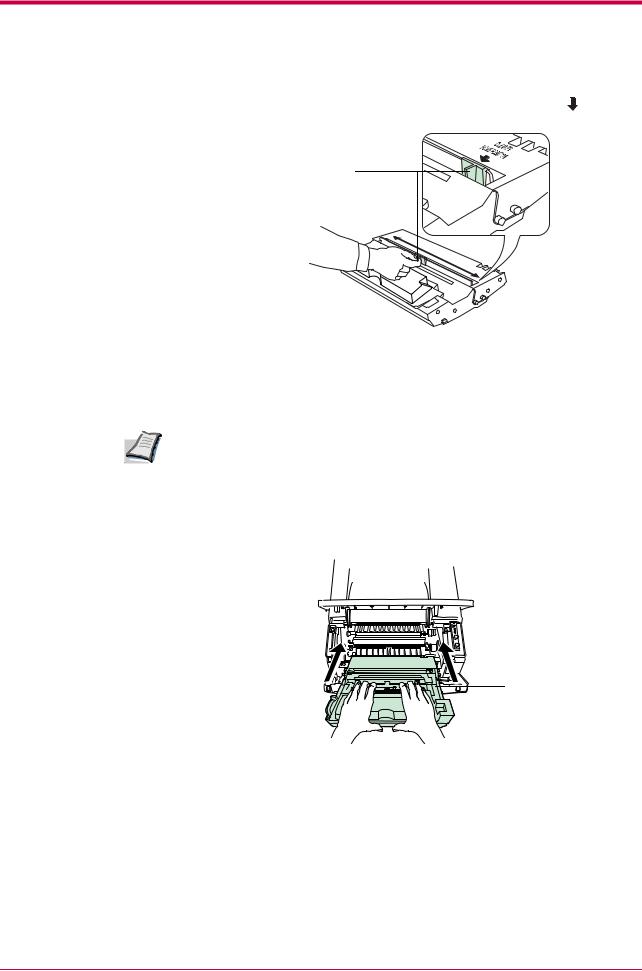
Cleaning the Printer
4 |
Slide the charger cleaner knob (green-colored) back and forth 2 to 3 |
times, then return it to its CLEANER HOME POSITION . |
Charger Cleaner Knob
Figure 2-12
After cleaning, make sure you restore the charger cleaner to its home position.
If the charger cleaner knob is not restored to its home position (marked CLEANER HOME POSITION  ), a black band will print along the length
), a black band will print along the length
of the page the next time you use the printer.
5 |
After cleaning is done, put the process unit back in the printer. To do |
so, carefully align the guides at both ends of the process unit with |
the slots in the printer.
Process Unit
Figure 2-13
2-8
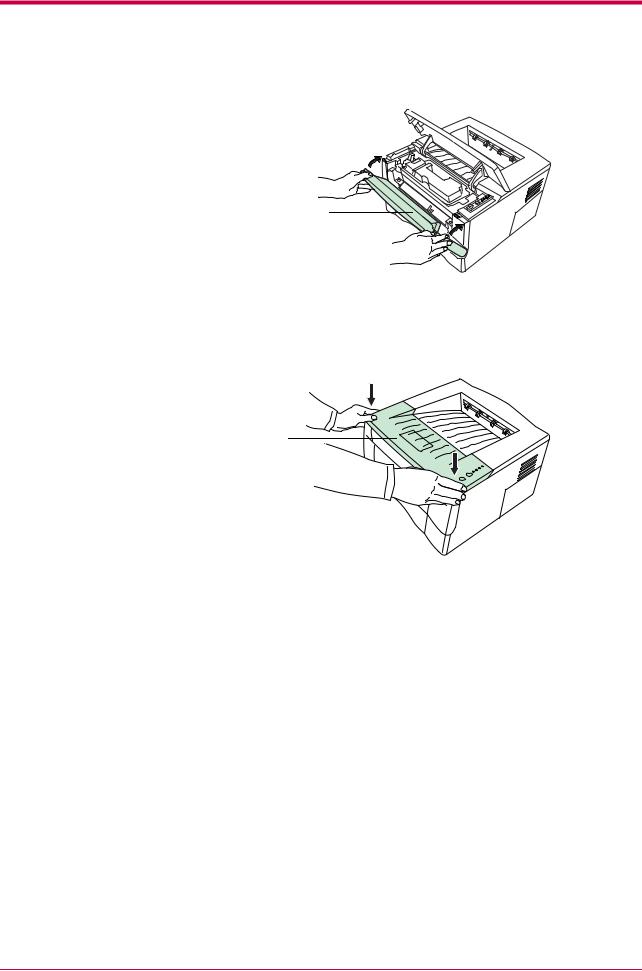
Cleaning the Printer
6 |
Close the front cover. |
Front Cover
|
Figure 2-14 |
7 |
Close the top cover by pressing down on the front left and right |
corners of the top cover. |
Top Cover
Figure 2-15
2-9
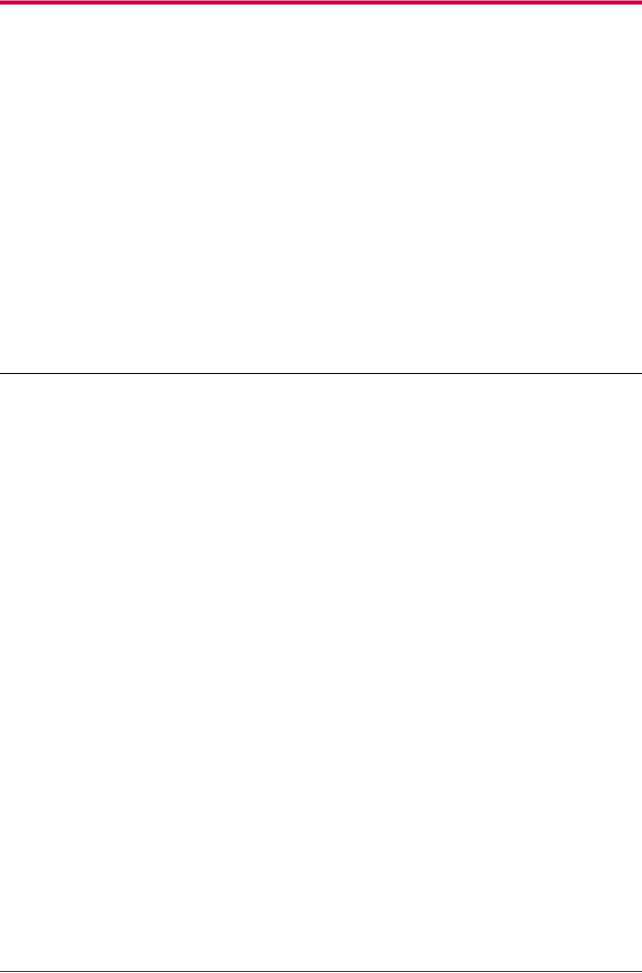
Chapter 3 Troubleshooting
This chapter explains how to handle printer problems that may occur. If a problem cannot be corrected, contact your Kyocera Mita dealer.
This chapter explains the following topics:
•General Guide for Troubleshooting
•Print Quality Problems
•Indicators
•Paper Jam Removal
3-1
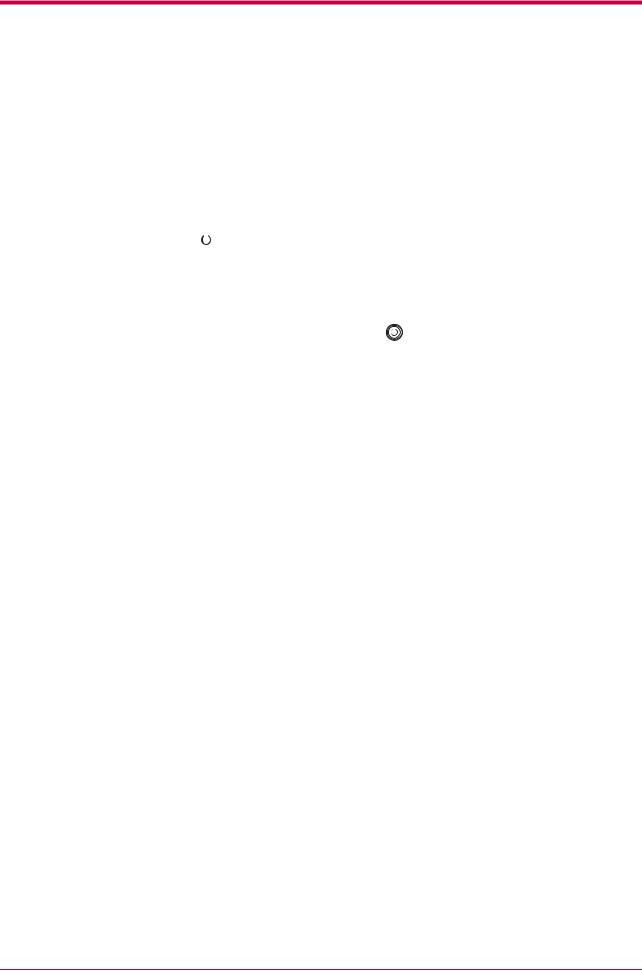
General Guide for Troubleshooting
3.1General Guide for Troubleshooting
There are quite a few printer problems which may be corrected by the user. If some kind of printer problem should occur, check the following before concluding the printer is broken.
This section explains how to correct these problems.
Symptom |
|
Check Items |
Corrective Action |
||
The printer will not |
Check the |
indicator. |
Off |
Look through the items below and check |
|
print from the |
|
|
|
anything that seems appropriate. |
|
computer. |
|
|
|
|
|
|
|
Flashing |
Rapid flashing: An error has occurred. For |
||
|
|
|
|||
|
|
|
|
details on error warnings and remedies, see |
|
|
|
|
|
section 3.3 Indicators on page 3-6. |
|
|
|
|
|
Flickering: The printer is offline. Pressing the |
|
|
|
|
|
key switches the printer to online status. |
|
|
|
|
|
|
|
|
|
|
Lit |
See the appropriate item below. |
|
|
|
|
|
||
|
Check if status page can |
Status page |
There may be a problem with the computer’s |
||
|
be printed. |
|
can be |
connection to the network. Also, look through |
|
|
|
|
printed. |
the items below and check anything that |
|
|
|
|
|
seems relevant. |
|
|
|
|
|
|
|
Print quality is not good. |
|
|
See section 3.2 Print Quality Problems on |
||
|
|
|
|
page 3-3. |
|
|
|
|
|
|
|
Paper is jammed. |
|
|
|
See section 3.4 Paper Jam Removal on page |
|
|
|
|
|
3-15. |
|
|
|
|
|
||
Nothing lights on the |
Check that the power cord is properly |
Turn off the printer’s power, plug in the power |
|||
operator panel even |
plugged into the power outlet. |
cord securely, and try turning on the printer’s |
|||
when power is turned |
|
|
|
power again. |
|
on and the fan makes |
|
|
|
|
|
Check that the power switch is really in the ON ( | ) position. |
|||||
no noise. |
|||||
|
|
|
|
||
|
|
|
|
||
The printer prints a |
Check the interface cable. |
|
Connect both ends of the interface cable |
||
status page, but data |
|
|
|
securely. Try replacing the printer cable. For |
|
from the computer is |
|
|
|
details on the parallel interface for this |
|
not being printed |
|
|
|
printer, see Appendix B. |
|
normally. |
|
|
|
|
|
Check program files and application |
Try printing another file or using another |
||||
|
|||||
|
software. |
|
|
print command. If the problem occurs only |
|
|
|
|
|
with a specific file or application, check the |
|
|
|
|
|
printer settings for that application. |
|
|
|
|
|
|
|
Table 3-1 |
|
|
|
|
|
If you still cannot correct a printer problem even after checking the above, please contact your Kyocera Mita dealer.
3-2
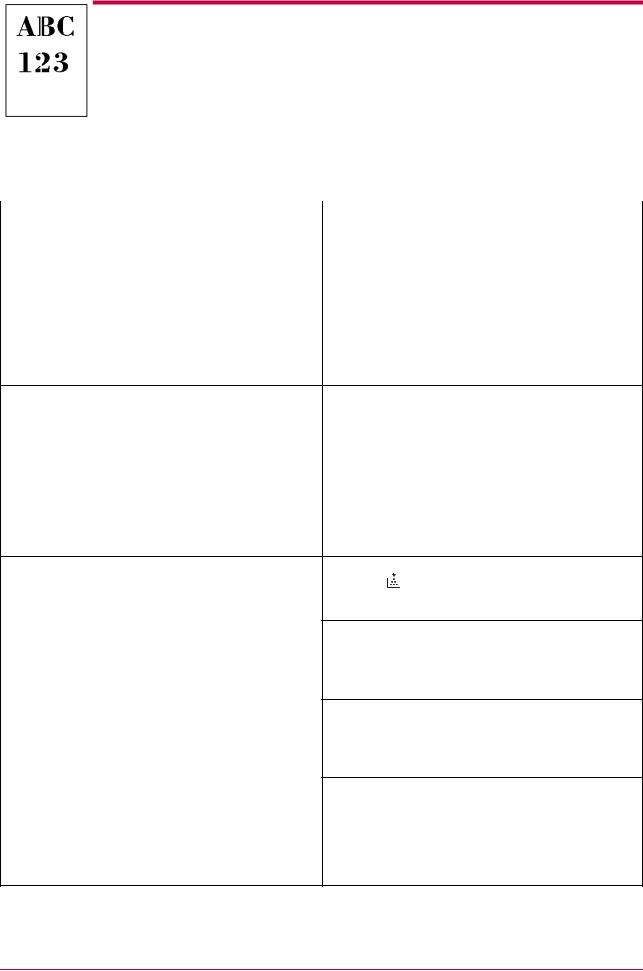
Print Quality Problems
3.2Print Quality Problems
|
As the following table shows, there are many possible causes of print |
|
quality problems, such as blank output as. The troubleshooting procedure |
|
for each type of problem is explained below. If you still can not solve the |
|
problem, contact your Kyocera Mita dealer. |
|
|
Printed Results |
Corrective Action |
All-black printout |
Contact your Kyocera Mita dealer. |
Dropouts, horizontal streaks, stray dots |
Clean the charger wire. |
|
Open the printer’s top and front covers. Remove the |
|
process unit from the printer and slide the charger knob |
|
back and forth to clean the charger wire. |
|
(See Chapter 2) |
Black or white vertical streaks |
Check the operator panel. |
|
|
When the |
(toner) indicator flashes, install a new |
|
toner kit. Clean the printer after replacement. |
|
|
(See Chapter 2) |
|
Clean the charger wire.
Open the printer’s top and front covers. Remove the process unit from the printer and slide the charger knob back and forth to clean the charger wire.
(See Chapter 2)
Check the position of the charger cleaner knob.
Open the printer’s top and front covers. Remove the process unit from the printer. Make sure the charger cleaner knob is restored to its home position.
(See Chapter 2)
Change the corresponding custom paper type setting.
When selecting the settings for the custom paper type under the Custom Paper Type Settings, be sure to select Normal 1 as the corresponding weight in the KM-NET for Clients. (See the KM-NET for Clients Operation Guide.)
Table 3-2
3-3
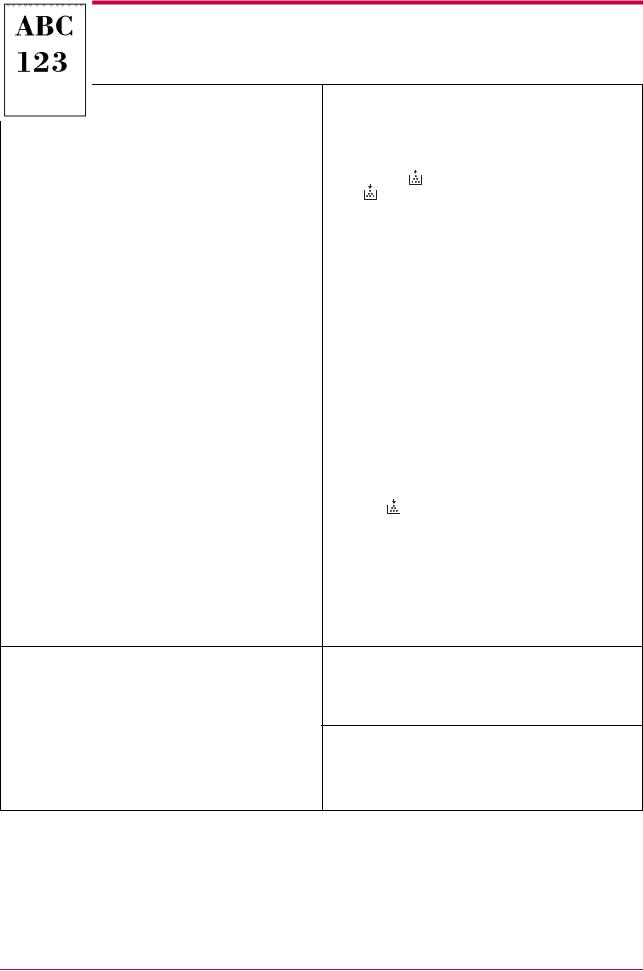
Print Quality Problems
Printed Results |
Corrective Action |
||
Faint or blurred printing |
Check the EcoPrint setting. |
||
|
When this setting is On, switch it to Off on the KM-NET |
||
|
for Clients. (See the KM-NET for Clients Operation |
||
|
Guide.) |
|
|
|
|
|
|
|
Confirm the |
(toner) indicator. |
|
|
If the |
(toner) indicator flashes, install a new toner |
|
|
kit. (See Chapter 2) |
||
|
|
||
|
Clean the charger wire. |
||
|
Open the printer’s top and front covers. Remove the |
||
|
process unit from the printer and slide the charger knob |
||
|
back and forth to clean the charger wire. |
||
|
(See Chapter 2) |
||
|
|
||
|
Try setting the thin paper mode. |
||
|
Set the paper type to Thin in the KM-NET for Clients |
||
|
utility. (See the KM-NET for Clients Operation |
||
|
Guide.) |
|
|
|
|
||
|
If the toner is not being fixed well to the paper, |
||
|
adjust the corresponding custom paper type |
||
|
setting. |
|
|
|
When selecting the settings for the custom paper type |
||
|
under the Custom Paper Type Settings, be sure to select |
||
|
Normal 3 as the corresponding weight in the KM-NET for |
||
|
Clients. (See the KM-NET for Clients Operation |
||
|
Guide.) |
|
|
|
|
||
Grey background. |
Check the operator panel. |
||
|
When the |
(toner) indicator flashes, install a new |
|
|
toner kit. (See Chapter 2) |
||
|
|
||
|
Check the process unit. |
||
|
Open the printer’s top and front covers, then check that |
||
|
the process unit is properly installed. |
||
Dirt on the top edge or back of the paper |
Check the transfer roller. |
|
Open the printer’s top and front covers. Remove the |
|
process unit from the printer and check whether the |
|
transfer roller is dirty. If so, print several pages to |
|
eliminate the dirt. |
Check the registration roller.
Open the printer’s top and front covers. Remove the process unit from the printer and check whether the registration roller is soiled with toner. If so, wipe it clean using the supplied wiper cloth.
Table 3-2 (Continued)
3-4
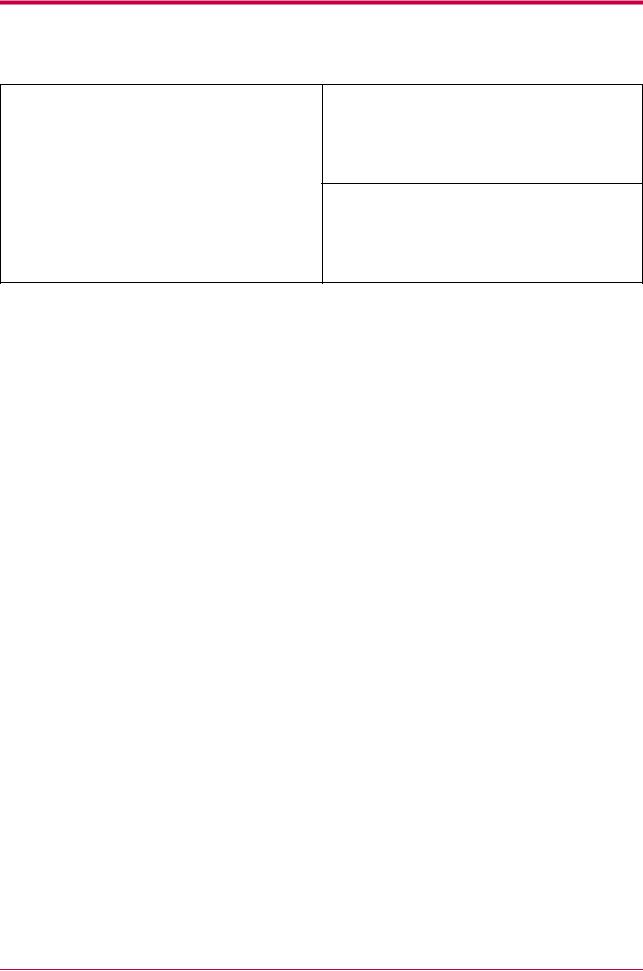
Print Quality Problems
Printed Results |
Corrective Action |
Characters out of position. |
Check the file or program. |
|
Check whether the problem is being caused by a |
|
PRESCRIBE command error. If the problem occurs only |
|
with a specific file or program, the most likely cause is an |
|
error in a parameter to a command or command syntax. |
Check the paper size setting.
Check that the paper size set in the paper source and the paper size set on the KM-NET for Clients are the same. (See the KM-NET for Clients Operation Guide.)
Table 3-2 (Continued)
3-5
